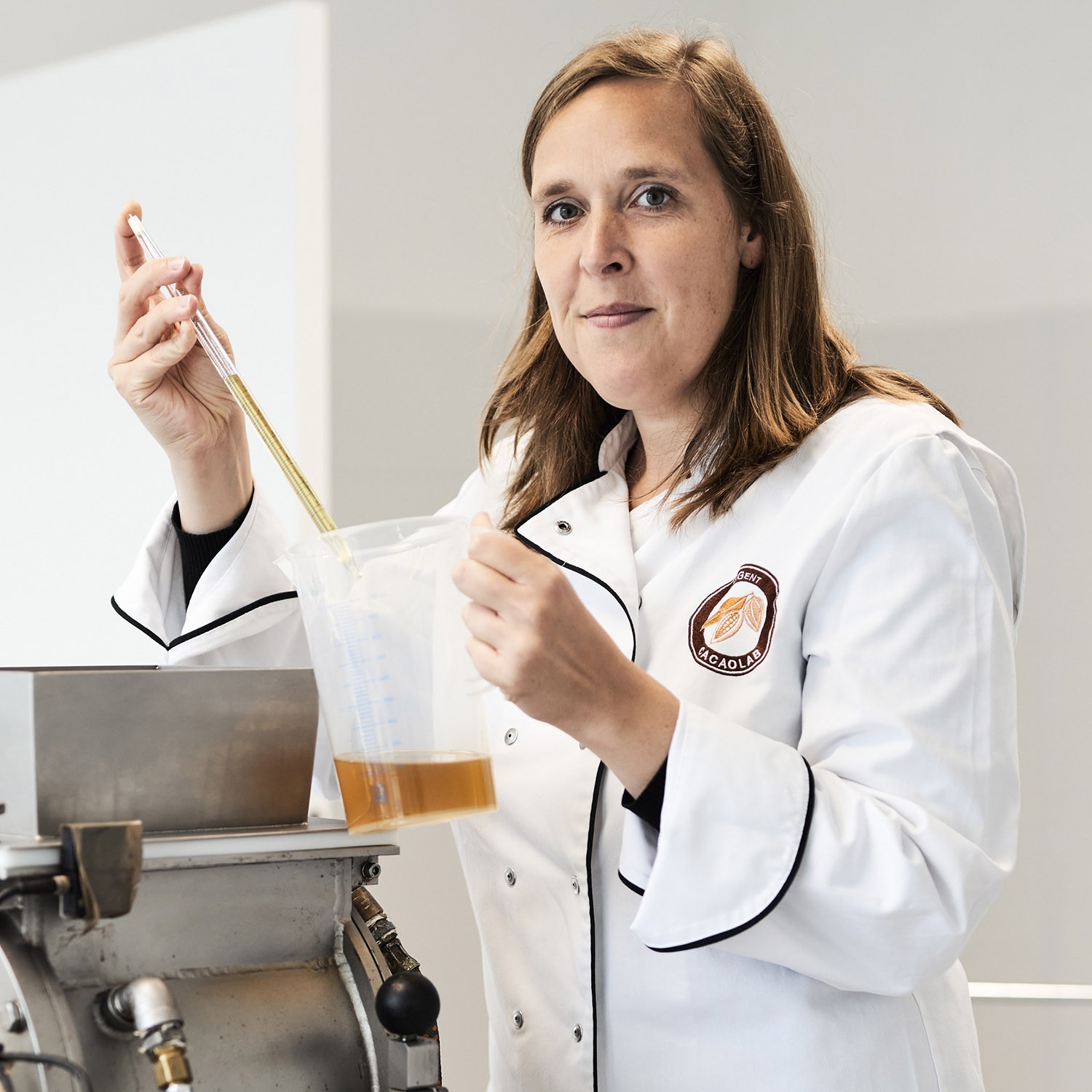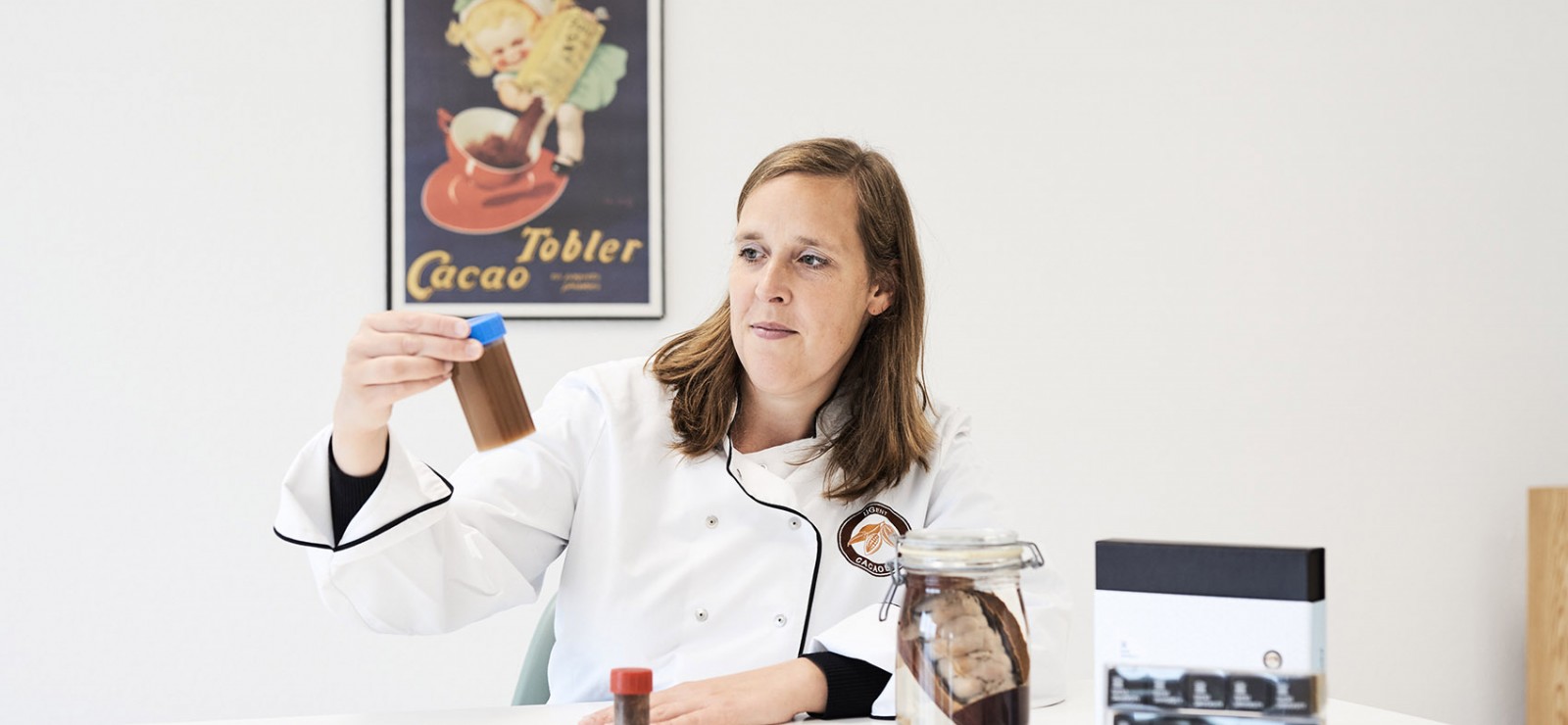If you have a sweet tooth, you’ll know how difficult it is to keep chocolate cool during the summer months. So where should you store it? In a cupboard or in your fridge?
This article was first published on June 30, 2022. The interviewee was contacted for an update in July 2023.
The correct answer is: neither. Obviously, chocolate risks melting in your cupboard when temperatures soar. But even if it doesn’t melt, a cupboard may not be your best option in sweltering weather. Because overheated chocolate can acquire a white film.
White film
“So-called ‘fat bloom’ occurs when cocoa butter recrystallises. Higher temperatures cause a very thin layer of needle-shaped structures to form on the surface of chocolate. To the eye, the chocolate will look like it’s dusted in white,” Claudia Delbaere explains. She is a chocolate and cocoa expert and the General Manager of Cacaolab, a Ghent University spin-off.
But even if you refrigerate your chocolate instead, a white coating can appear. “The result may look similar, but it’s not the same. When you remove chocolate from the fridge, condensation or moisture will form on the surface because of the temperature difference and the sugars will dissolve in the condensed water. The white film you then see is caused by the recrystallisation of the sugar. This is called ‘sugar bloom’.”
While chocolate that has ‘bloomed’ is safe to eat, “it doesn’t look very appealing. What’s more, the temperature fluctuations can change the taste of the chocolate, which is why I advise against eating it,” Claudia says.
So where should you store it?
“Ideally, chocolate should be kept at a temperature between 15 and 18°C. A cellar or cool pantry would be perfect.” Claudia, who remains an inveterate chocaholic despite her years of chocolate research, keeps her own stash in a cupboard that is slightly cooler than the rest of the house.

Claudia Delbaere graduated in 2008 with a degree in Bioengineering. She spent five years researching fat bloom on chocolates at Ghent University. In 2013, she joined Cacaolab, a Ghent University spin-off she currently leads. Cacaolab creates innovative chocolate products and processes for companies. Claudia’s favourite spot at Ghent University is the courtyard garden of the Faculty of Bioengineering: she enjoys sitting among the plants and the trees and finds it the perfect place to relax during a break or after work.
Read also
Manon researches healthy sugars: “Because of my research I pay more attention to what I eat”
Manon Steynen from the Faculty of Bioscience Engineering is trying to convert unhealthy sugar into healthy sugar.
This is how to avoid parasites on holiday
Holidays! You're already looking forward to all the delicious things you'll eat while travelling, but wait ... Can you just eat anything? "There are some foods that you need to be a bit careful with.” Professor Sarah Gabriel tells us how to avoid taking an extra passenger back home
“If we want to feed nine billion people in 2050, we’ll have to look to the sea.”
Marine biologist and Professor Emeritus Patrick Sorgeloos (Faculty of Bioscience Engineering) was instrumental in shaping modern aquaculture in recent decades. If his career has taught him one thing, it is that aquaculture has a crucial role to play in continuing to ensure food security. “By 2050 more than half of our food must come from the sea. And it’s possible.”
International top recognition for researcher who is combating ‘hidden’ hunger
From now on, Professor Dominique Van Der Straeten can call herself a fellow of the prestigious American Association for the Advancement of Science (AAAS). This international recognition honours researchers who are making an invaluable contribution to science and its application. In the case of professor Van Der Straeten, it recognises her research, which aims to reduce ‘hidden’ hunger and the consequences of climate change.




